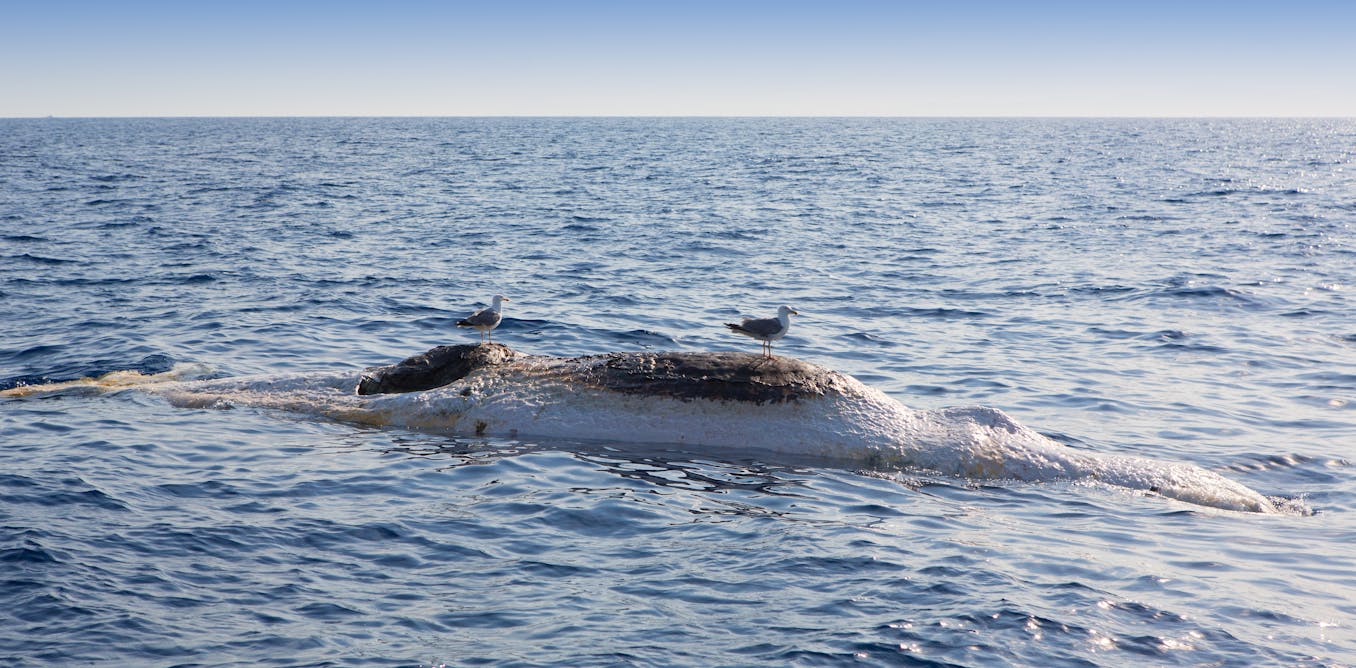Big animal, big problem
When a whale dies at sea, it will initially sink but may refloat after a day or two, as gas develops in its intestines. If the carcass washes up on the beach, it must be dealt with.
Disposing of dead whales is complicated. Last century, authorities sought to blow up the carcasses to break them into smaller, more manageable pieces – a method, thankfully, which is no longer pursued.
In most cases these days, whale remains are buried in sand dunes or trucked to landfill.
Simulating the drift of a whale carcass towed to sea would reduce the risk of it being washed back ashore and help determine the best possible release location.
This would allow for more deceased whales to be returned to sea, where their remains play an important role in the marine ecosystem.
Very relevant, but definitely NSFW!
Dead whale explodes in the sea…



